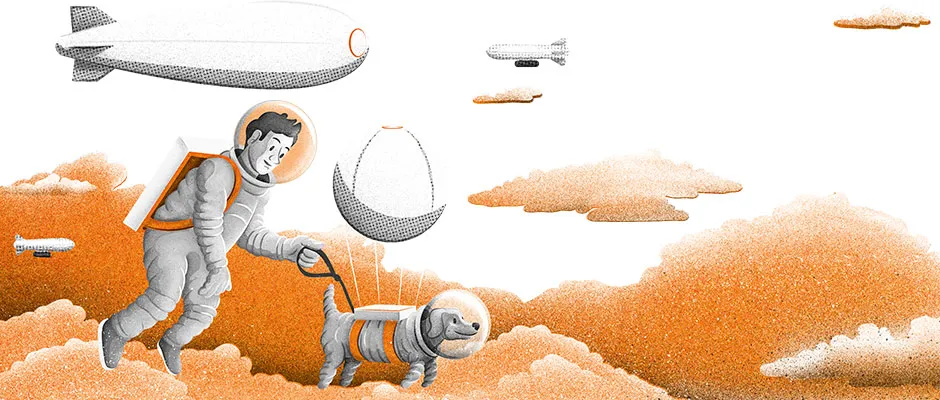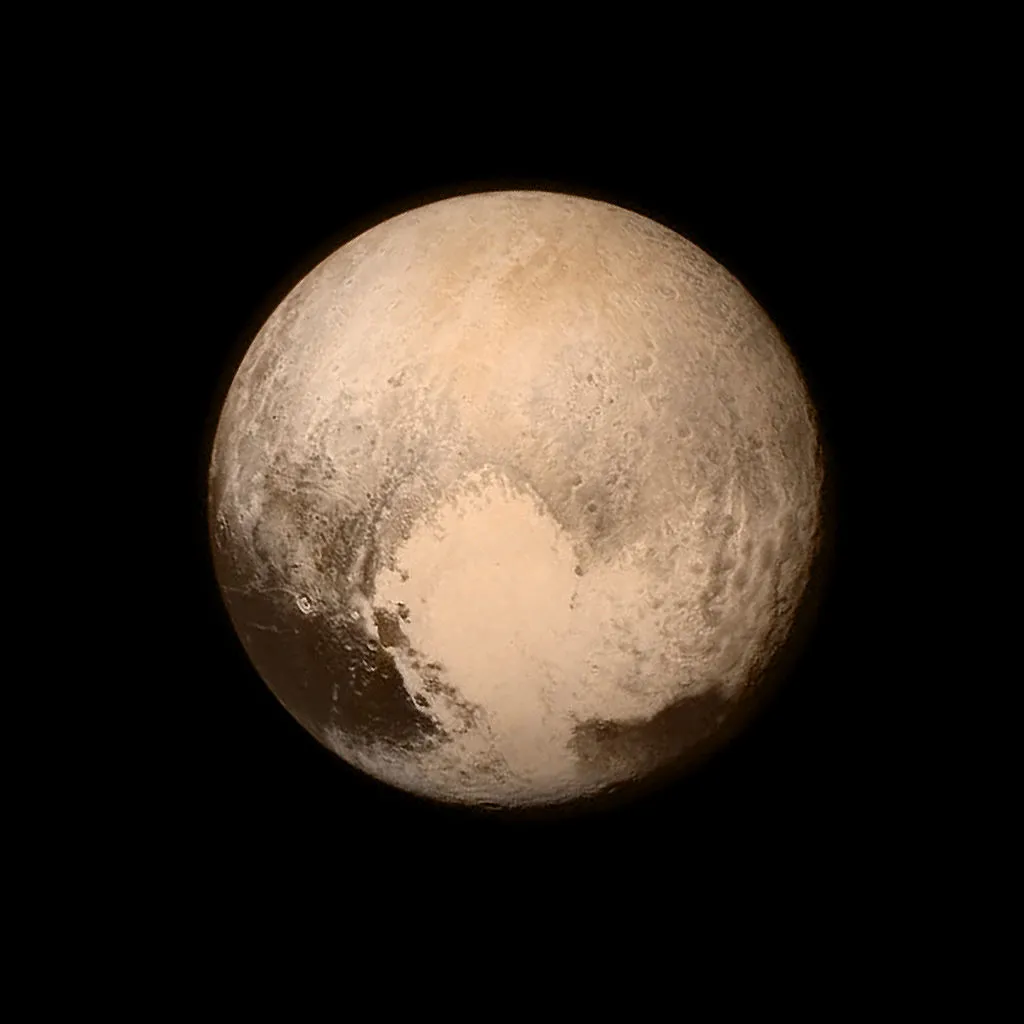Everyone's getting excited about visiting Mars. Three robotic missions are slated to blast off to the red planet this year to study its habitability. Elon Musk, the CEO of SpaceX, hopes to establish a colony of thousands of people there within the next few decades. Some folks would even consider a one-way trip with no guarantee of return.
But the Solar System is big, and Mars isn't the only exciting destination. How about Mercury, Venus, or your very own asteroid? How about the moons of the outer planets or even Pluto?
Such notions may seem fantastical. But you first must understand that living on Mars is wrought with challenges — no breathable air, little air pressure, and lots of radiation, for starters. Living elsewhere in the Solar System is only marginally more difficult. It's a matter of picking your poison.
Extreme sports on Titan
Consider Titan, a moon of Saturn. Titan has one important feature that Mars does not, and that's air pressure. You could roam about Titan without a bulky, pressurised suit. The gravity is weak, however, only about 0.14G, which is 14 per cent of the Earth's 1G. (Mars is 0.38G.) Maybe 0.14G isn't suitable for human health. But the low gravity and thick atmosphere conspire to allow something rather fun — flying.
Read more about exploring the Solar System:
- Space exploration: how might the next 50 years progress?
- Planet Nine: How we’ll find the Solar System's missing planet
That's right, you could fly on Titan by flapping artificial wings. Or, you could ride a flying bicycle, which I dare call a flycycle. Everything can fly on Titan, even your house. Because Titan's atmosphere is 95 per cent nitrogen, your house, filled with oxygen to breathe, would be lighter and warmer than the surrounding "air" and would float up like a balloon on Earth.
It gets funkier. Titan is the only terrestrial body in the Solar System other than Earth known to have a liquid cycle of lakes and rivers, clouds and rain. The liquid is not water but rather ethane and methane at -180°C. Nevertheless, massive lakes of this stuff cover Titan. You could go boating on the lakes and, assuming you have the protective gear, go swimming, as well. The low gravity implies you could jump out of the lake like a dolphin.
A blast to visit, but, alas, the low gravity ultimately might prevent long-term human habitation. We know of the myriad problems caused by zero G on the International Space Station — bone and muscle loss, blindness, and more. Also, it takes several years to reach Titan in a spacecraft.
Floating cities on Venus
Venus, the closest planet to Earth, has similar Earth gravity, 0.9G. And we could reach it in only three or four months, about half the time it would take to get to Mars. The only catch: that scorching surface temperature of 460°C.
But what if we live in the clouds? At a height of 50 kilometres above the surface, the temperature would be a manageable 50°C. You could walk outside on a balloon platform an experience roughly the same air pressure and gravity as you would on Earth. You could try hang gliding; just don't go too low.

Again, fun to visit. But the one limiting aspect of living indefinitely in a floating balloon city above Venus is that, well, you're in a floating balloon city. The charm will surely wear off, as the clouds are too thick to see the surface of Venus. You might as well be floating above Earth.
Trainson Mercury
Mercury, the planet closest to the Sun, may offer a livelier existence than Venus. Mercury gets hot, too, to over 400°C. But whereas Venus is hot all day and night, Mercury, because it has no atmosphere to trap and circulate heat, is one of the coldest places in the Solar System during the night when the Sun isn't shining, a -170°C. Tolerable temperatures exist at dawn and dusk, though, before your spot gets too hot or too cold.
Here's where it gets interesting. Mercury rotates on its axis very slowly, taking about 175 Earth days for a single rotation, compared to the 24-hour (one day) Earth rotation. This means that a train on Mercury moving westward at only 3.5 km/hour could stay in a zone of perpetual dawn or dusk.
Read more about Mars:
- Does the Red Planet harbour life? Here’s what we know
- NASA's Martian habitat contest final stage winners announced
Habitats on rails could inch their way around Mercury in caravans powered by abundant solar energy. You could hop out and explore the terrain provided you protect yourself from radiation and the lack of air pressure, as you would on our Moon. But temperature wouldn't be an issue. Just make it back to the train in time, or you'll be toast… or ice.
Gravity might not be an issue, either. Mercury is as small as our Moon but very dense and has the same gravitational force as that of Mars, about 38 per cent of Earth's.
Caves in an asteroid
You may be happy owning your very own world, living inside an asteroid. Stay with me on this. Many asteroids are about the size of mountains. You could bore out the centre and create a habitat within, with a thick crust to protect you from space radiation. Thousands of people could live here. Most asteroids have plenty of water ice and every chemical needed to support human life.
Call it asteroid homesteading. Key to this would be the availability of fusion energy from hydrogen in the water ice, which humans may finally learn to harness in the near future. This would provide the energy to illuminate your asteroid city, grow plants, and power spacecraft to visit your neighbours in other asteroids.
And hold on to your hat. This same protective asteroid habitat could, with the right push, powered by fusion, fly off into deep space at 10 per cent light speed on a journey to the stars.
Cable rides on Pluto
The only thing stopping us from living on Pluto, really, is the distance. The fastest spacecraft ever launched, New Horizons, took 10 years to get there. Once we can travel faster, though, what's stopping us? The other challenges are similar. Cold is cold, and airless is airless, whether you're on the Moon, Mars, or Pluto.
What's neat about Pluto is that it is tidally locked to its moon Charon. They always show the same face to each other. So, we could latch the two together with a giant cable and live somewhere in the middle, in rotating habitats attached to the cable that provide artificial gravity. Pluto or Charon would only be an elevator ride away.

Mars tends to dominate the discussion of where humans may someday live. Mars is arguably an appealing second home, with Earth-like geography, a near 24-hour day–night cycle, and all the resources to support life, including water. No other planet or moon in the Solar System can offer that.
As alluring as this is, the lack of a suitable atmospheric pressure on Mars prohibits most lifeforms to exist outside the confines of a protective dome. Life on Mars would be like life in an indoor shopping mall, albeit with a captivating view.
This brings us back to Earth, a rather perfect planet in comparison to our other options. We'd be wise not to lose our air, water, and ideal temperature range. Trains on Mercury, balloons on Venus, domes on Mars, caves inside asteroids… all possible, but it would be best to keep these as adventures and not necessities.
Spacefarers:How Humans Will Settle the Moon, Mars, and Beyond by Christopher Wanjek is out on 14 April 2020 (£23.95, Harvard University Press).

